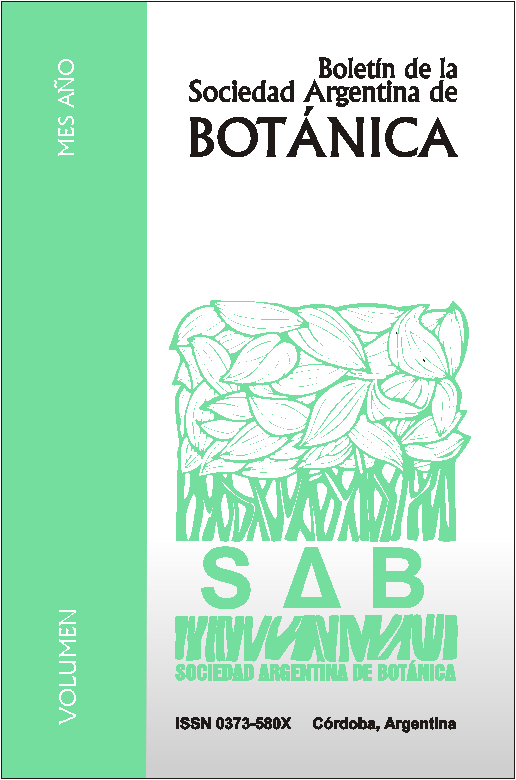Comparative analysis of wood anatomy in forty one species of Rubiaceae with taxonomic emphasis.
DOI:
https://doi.org/10.31055/1851.2372.v51.n4.16338Keywords:
Cluster analysis, wood anatomy, Cinchonoideae, Ixoroideae, Rubioideae, taxonomy.Abstract
Comparative analysis of wood anatomy in forty one species of Rubiaceae with taxonomic emphasis. Rubiaceae is one of the most complex families from a taxonomic point of view, a fact proven
by the numerous changes occurring over the years in their internal organization. Based on a literature review, this study investigates the wood of 41 species and utilizes multivariate analysis to verify group
formation and placement of species in the subfamilies Ixoroideae, Rubioideae and Cinchonoideae. It can be seen that the group presents structurally homogeneous due to the large number of shared anatomical characters, a fact that has often been stated by others. The species do not completely group according to their subfamilies. The analysis also suggests the change of Calycophyllum genera for Cinchonoideae subfamily while the species Calycophyllum remain united in the dendrogram, demonstrating the homogeneity of the genera.
Downloads
Published
Issue
Section
License
Provides immediate and free OPEN ACCESS to its content under the principle of making research freely available to the public, which fosters a greater exchange of global knowledge, allowing authors to maintain their copyright without restrictions.
Material published in Bol. Soc. Argent. Bot. is distributed under a Creative Commons Attribution-NonCommercial-ShareAlike 4.0 International license.





